Internet
8 Common Website Mistakes You Should Avoid
Published
7 months agoon
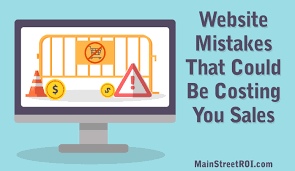
Website mistakes are something every website owner wants to steer clear of. They harm rankings, conversions, traffic – everything that helps you grow and succeed. Here’s a list of 8 common website mistakes you should avoid.
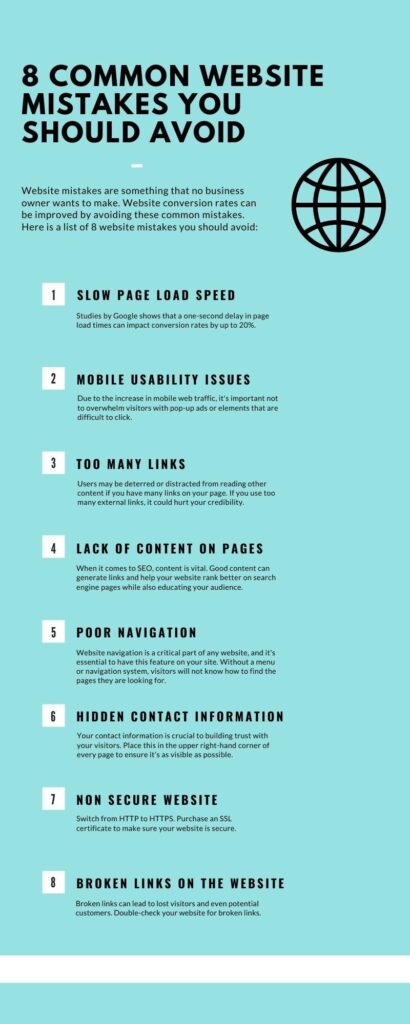
For more tips, hacks and information read more blogs in our Learning and Resources Blog category. If you have any questions or suggestions, please feel free to drop a comment below
You may like
Branding
10 Strategies for Optimizing Your Email Marketing Campaign
Published
7 months agoon
September 30, 2024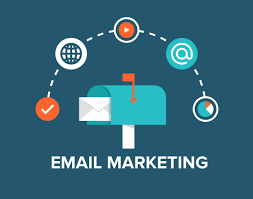
Email Marketing is effective because it targets qualified prospects who have shown interest, and subscribed to your content. Here are 10 strategies for achieving a successful email marketing campaign.
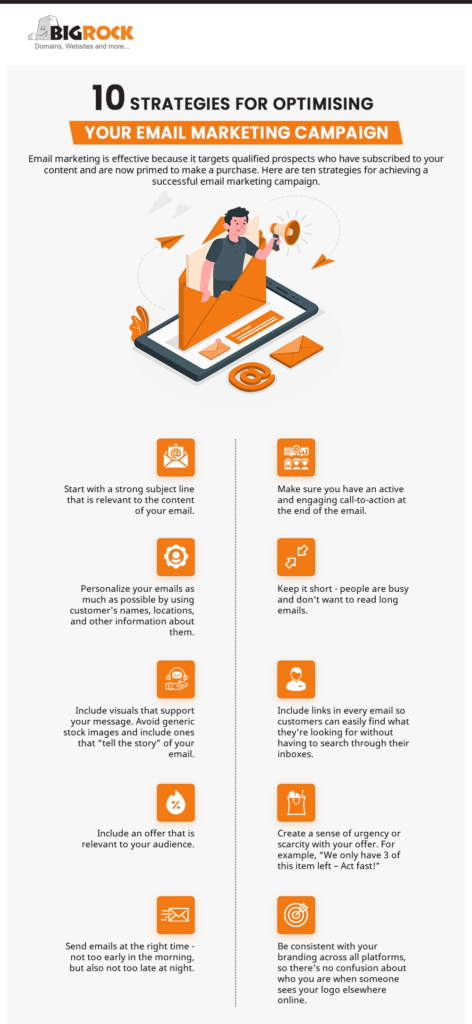
For more tips, hacks and information read more blogs in our Learning and Resources Blog category. If you have any questions or suggestions, please feel free to drop a comment below.
Internet
How to Migrate from HTTP to HTTPS – A Complete Guide
Published
7 months agoon
September 30, 2024
The Internet has made it easy for business owners to reach out to their customers. But there are hackers, viruses, malware, etc., out there just waiting to attack your website or system. One of the most common ways that these nefarious forces enter our system is through an unsecured connection. If you want to protect yourself from these intruders, it’s time to make the switch over to HTTPS! Read on for a complete guide on migrating from HTTP traffic to more secure HTTPS connections with minimal fuss.
This blog post will walk you through everything you need to know about migrating successfully from HTTP to HTTPS.
What is HTTPS, and Why should You care about migrating from HTTP?
HTTPS is a protected and encrypted version of the underlying protocol in data communication between your browser and each site you visit. On the other hand, HTTP is the plain-text version of the protocol. Anytime you visit a site using HTTP, your activity could be watched, tracked, and recorded by anyone sniffing on your network traffic.
HTTPS is necessary for security reasons whenever you are transmitting sensitive data like credit card numbers or passwords. HTTPS ensures that only the server can decrypt the information sent between your browser and the website. Without HTTPS, your browser will send requests in plain text to the server, which leaves you vulnerable to attacks like Man-in-the-middle (MITM). A man in the middle (MITM) attack basically occurs when a perpetrator gets into communication between a user and an application, listening to one of the parties, making it look as though a regular information exchange is taking place. It is important to choose sites that protects your transmission from eavesdropping, man-in-the-middle attacks, and tampering with any data you send or receive.
Why is it beneficial to migrate your site’s traffic over to HTTPS
In the past few years, cyber-attacks and data breaches have been a major concern as it has lead to personal information exposure. As a result, many businesses are making the switch to HTTPS for their site’s traffic.
But HTTPS isn’t without its caveats. You’ll need to ensure that your website is free from mixed content issues to reap the rewards of serving traffic over SSL/TLS.
To ensure your website is ready for HTTPS, you need to take a closer look at both the server configuration and any in-site content.
Let’s start with the server-side of things.
What about my server? My site runs on WordPress. Do I need to do anything on the server level?
It’s best practice not to configure your server to use HTTPS manually. Most web servers can serve content over SSL/TLS automatically, though you’ll need to check the settings for your chosen platform.WordPress offers built-in support for HTTPS if you’re using version 4.4 or higher – enabling this is as simple as changing the WordPress Address (URL) and Site Address (URL) in your wp-config.php file to use the HTTPS:// prefix.
Next, navigate to Settings > General and ensure that your WordPress Address (URL) and Site Address (URL) both have the HTTPS prefix. In essence, if your site serves from a standard web server such as Apache or NGINX, you’re probably already using SSL/TLS without even knowing it!
How to make a move from HTTP to HTTPS
Making a move to HTTPS is a relatively straightforward process, though it will require careful planning and testing before making the switch. As with most things related to your website’s security, this is as much about preparing for future-proofing as it is about making the switch.
How to obtain an HTTPS certificate
Obtaining an SSL certification is the first step in enabling HTTPS on your website. There are several types of SSL available, but it is always recommended to use a certificate with an “Extended Validation” status. While these certificates cost more than their domain-validated counterparts, they provide the most apparent visual indication to site visitors that your site will be using HTTPS.
- Host with a dedicated IP address
All primary web servers such as Apache and NGINX can use SSL/TLS without any issues. A dedicated IP address is a must if you plan to support only one domain with your certificate. It means that certificates with multiple fields will be a limited incompatibility. Your website’s DNS records will also need to be updated for visitors to redirect to the new HTTPS URL.
- Buy an SSL certificate
Before using HTTPS on your website, you’ll need to purchase an SSL certificate from a trusted Certificate Authority (CA). Your web host may provide you with SSL certificates as part of their service. If they don’t, or if all major browsers and operating systems don’t accept their certificates, you may wish to opt for a dedicated SSL certificate rather than using your web host’s in-house certificate.
You should also ensure that all major browsers and operating systems trust your chosen Certificate Authority – otherwise, visitors to your site won’t be able to access it via HTTPS.
- Request the SSL certificate
If you have purchased a single-domain SSL certificate, you will need to generate a Certificate Signing Request (CSR) using OpenSSL. After that, your CA will provide you with a signed SSL certificate which must be installed on your web server by your hosting provider.
- HTTP Strict-Transport-Security (HSTS)
Once you have enabled HTTPS on your site, helping the HTTP Strict-Transport-Security header is an excellent second step towards securing visitors’ communications. It will ensure that web browsers automatically use an encrypted connection to access your site – provided they meet specific criteria such as having TLS 1.2 support and their clock set correctly – even if your site gets accessed over HTTP.
- Install the certificate-parsing library
This page describes installing the SSL certificate-parsing library in PHP. Nowadays, the preferred method for verifying an SSL/TLS certificate is to use a Certificate Authority file, also known as a bundle. It contains all of the CA certificates trusted for server authentication by significant web browsers. However, some websites may have custom requirements to trust only a subset of CAs or wish to generate their CA-signed certificates rather than a certificate bundle.
- Update your site to enable HTTPS-only connections
Once you change the domain to HTTPS on your website, the next step is to configure it so visitors can only access content via an encrypted connection (i.e., “HTTPS-only”). If users attempt to load any URL in your site that they cannot access via HTTPS, their browser will display an error message. However, if they’re still using an insecure version of HTTP, then they’ll get a mixed content warning, and the page will load as expected.
- 301 redirect to HTTPS
If you’ve enabled SSL on your website, the final step is to configure 301 redirects so that search engines and other users can easily find your content via HTTPS. Otherwise, they’ll be stuck connecting over HTTP, which isn’t secure. If you’re using a caching plugin (a caching plugin generates static HTML pages of your website and saves it on your server).W3 Total Cache, it’s straightforward to configure 301 redirects so that all requests for content on your website get redirected to HTTPS rather than HTTP.
Common mistakes people make while migrating from HTTP to HTTPS and How you can avoid them
The key to successfully migrating your site from HTTP to HTTPS is preparation – if you aren’t careful, it’s easy to miss something and carry on using the wrong protocol. Here are some of the most common mistakes people make when migrating their sites and some simple ways to avoid them.
Not editing your site’s .htaccess file
.htaccess files are similar to Apache’s HTTPd.conf file in that they contain many configuration settings for the .htaccess file itself and any content which gets embedded within it. Editing your site’s .htaccess file with care can let you control how visitors are handled by your website when making requests with insecure HTTP connections.
Forgetting to update your internal links and forms
When you change your website’s protocol from HTTP to HTTPS, it can be easy to forget about all of the different places this information gets embedded within your site, such as internal links, forms, JavaScript code, etc. If you don’t update these, users will get mixed content warnings if they’ve migrated over to HTTPS, and you’ll lose out on the security benefits of using SSL.
Not setting up an HSTS header
An HSTS (HTTP Strict Transport Security) header is a way for browsers to tell web servers that they must always use HTTPS – even if the user tries to access your site by typing in the HTTP version.
Conclusion
In the end, migrating to HTTPS is a way for you and your website visitors to have secure interactions with each other. If you’re currently using HTTP, you must migrate over to HTTPS. It will ensure your site is compatible with the latest browsers and devices, which can also considerably impact SEO rankings in Google. We recommend following this guide closely for optimal results!
Contact the expert team of Bigrock for an SSL certificate and any query related to migrating to HTTPS!
Business
SSD Hosting Vs HDD Hosting: Know the Difference
Published
7 months agoon
September 30, 2024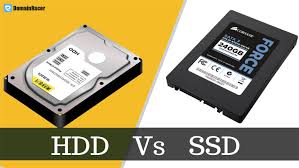
Since the inception of computers, storage has always been an issue. Hard drives with spinning disks are the most common type of storage today, and they usually come in two types: SSD hosting and HDD hosting. Running a website is not always an easy task. You have to be knowledgeable about many different things, including hosting. There are two main types of hosting: HDD and SSD. The first one stores files on hard disk drives, while the second uses solid-state disks. What will work best for your site? This blog post will cover the difference between these two types of hosting and help make your decision easier!
But before we jump into the difference between HDD and SSD, let’s start with the basics of hosting.
What is hosting?
Hosting provides a space for people to store their information. The most important thing about hosting is that it allows users to make sure the website stays up and running at all times. If you are planning on launching your website, then you need consider investing in hosting.
A hosting service provider is someone that offers online storage space on its servers and provides access to the internet. A web hosting service provider provides the technological infrastructure so individuals and organizations can make their services available on the World Wide Web.
Now, let’s move on to understanding the two most popular types of hosting: HDD and SSD.
What is HDD Hosting?
HDD hosting is a type of web host that uses hard disk drives for data storage. You will usually find this in the form of dedicated servers, where your website’s content and resources store on their physical server, which you rent from them. This kind of setup requires more technical knowledge since you have to configure everything yourself without much support. However, it does give you more control than shared hosting since your data is stored on its server.
What is SSD Hosting?
SSD hosting refers to a web host that uses Solid State Drives for storage instead of regular hard disk drives. It usually means that servers will virtualize the backend architecture or cloud-based. This kind of setup requires no technical knowledge since everything will be pre-configured and managed by a backend server that you won’t have access to directly—all you need to do is upload your content!
Solid-State Drives, or SSDs, are among the most recent storage devices for PCs and laptops. In comparison to conventional Hard Disk Drives, or HDDs, data gets stored in a semiconductor-based memory. SSDs can assist you in resolving issues that you may have with the standard hard drives. Now, let us take a closer look at the critical differences between SSD hosting and HDD hosting.
SSD Vs HDD: The key differences
Both SSDs and HDDs are viable storage options. There are, however, certain significant variations in terms of Hosting speed, reliability, data security, environment friendly, storage, power consumption, and cost.
Hosting Speed: The primary distinction between SSD and HDD web hosting is the speed with which your server could store, access, and visualize information to visitors. A hard disc drive (HDD) is a physical metal disc that rotates. Each HDD includes a driving head that travels around the disc in search of the data you need. After that, the information gets transferred to the computer.
There are no moving parts in an SSD. Microchips stores data in SSDs (like a USB storage drive). As a result, an SSD’s seek time (the time it takes to find data) is significantly faster than an HDD’s. HDDs average 200 IOPS, but SSDs average 90.000 IOPS, which is 450 times quicker than HDDs. Furthermore, an SSD has a much lower latency.
Reliability and Storage: While both SSDs and HDDs offer high data security levels, SSD provides more reliability than HDD. It makes the website much more accessible when storing large files such as databases or videos without any worry about losing important information when they get corrupted due to power failure etc.
These provide the same fundamental form of storage but are significantly more efficient at reading and writing data. As a result, SSD can store and retrieve data considerably more quickly than their spinning counterparts. Because SSDs deliver data 20 times faster than HDDs, SSD website hosting allows you to have a website that loads 20 times faster.
Data Security: Hard disc drives are considerably more vulnerable to mechanical malfunction than solid-state drives since they depend on physical movement. You’re also in danger of losing data if a disc dies. Hosting companies attempt to address this problem with HDDs by employing a RAID tape backup (Redundant Array of Inexpensive Disks), but the danger still exists.
Even if you have a sound backup system in place, it’s still easier not to stress about your main drive. SSDs seem to be more resistant to mechanical harm such as bumps and drops, in addition to getting longer lifespans.
Environment Friendly: Because of the materials they make, HDDs tend to be less environmentally friendly than SSDs, which use metal oxide semiconductors for their memory cells instead of an HDD’s magnetic coating.
Cost: HDDs tend to be more affordable than SSDs, which are still quite pricey since they are introduced as a mainstream storage option for PCs, laptops, and servers.
Power Consumption: Solid-state SSDs generally consume only 20% of the energy required by spinning hard disc drives. When multiplied by thousands of servers, this represents a significant power reduction. So, if you care about the environment and want to save money on power, SSD hosting is the way to go.
HDD or SSD: Which is the best choice for you?
If you are looking for high speed, reliability, and added security for all your data storage needs (e.g. file storage/sharing, databases), then you really need SSD hosting. Depending on your budget and the quality of service you want to get out of it, you can either get solid-state drives on shared servers or go for dedicated SSDs. If you are looking to host fast websites, then understanding what exactly speeds your website would load is crucial. If you want less latency and more security, then SSD hosting is the way to go. One the other hand, the benefits of choosing a hard disk drive are that they are a proven technology and are less expensive than solid-state drives for the same amount of storage. Currently, HDDs are also available with more storage space than SSDs. Thus, the choice here would majorly depend on what your needs are.
Get in touch with the expert team at Bigrock For better insight on SSD and HDD hosting and which one would be suitable for your needs!
Business
Does Domain Age Really Matter? Older is Better, Right?
Published
7 months agoon
September 30, 2024
Domain age is a metric that is often used to gauge the success of a website as it is an important factor that helps with determining the rank of a website. Domain age is basically the length of time the site has been registered and maintained. However, it does not automatically indicate better rankings, but it can provide valuable information which can affect how your website performs on search engines like Google. For instance, if you have a new domain that doesn’t have any content or links to other sites yet, it could take longer for Google to find it when people are searching for your niche topic. This can be crucial if you’re looking for anything from increased conversion rate to better SERP rankings or simply more traffic.
In this article, we’ll talk about what domain age means, how to calculate domain age, why it plays a crucial role in your business’s online presence, and if the older is better.
What is the Doman Age, and Why is it Important?
Domain age is basically the number of years a domain has been registered with one specific registrar. It’s important to note here that ‘domain age’ isn’t necessarily indicative of how long a website or business has existed, but rather how many months/years it’s had under its current name and extension (e.g., .com, .org, .info, etc.).
Domain age is important because it is often used as a measure of trust and authority when ranking websites in search engines. The thought here is that if someone has been online for years, they must be doing something right. While some may think older domains have more value than their counterparts, this is not always true, as there are plenty of websites out there that are able to succeed without establishing an earlier presence on the Internet. However, domain age doesn’t really affect a business’ online presence by itself but combined with other metrics like page rank, the number of backlinks, etc., it leads to a better SEO score.
In order to understand how domain age impacts a website, it is important to first go over how Google determines the “age” of a specific site/domain.
How Google Determines Domain Age
Ideally, Google doesn’t disclose its exact process for determining a site’s age. However, there are some assumptions that we can make based on what we know about how Google works and the fact that they use domain age as a ranking factor.
One of the most obvious assumptions on how Google determines the age of a domain is by looking at the “WhoIs” record. This record contains the date of when a specific website was first registered/created on the Internet, which can give us an idea of their domain age. However, keep in mind that different registrars may have varying records for WhoIs reporting and how complete they are (not all offer information about dates of creation). Furthermore, most registrars do not actually show accurate data anyway unless you pay extra to get full access – to take any numbers with a grain of salt.
Another major factor is obviously looking at Google’s own webmaster tools account, where it shows your domain registration history along with possible previous versions if there has been more than one change over time. Unfortunately, this feature does require creating an account at Webmaster Tools – which means you’ll have to be tracking your domain for at least a few months before it starts showing any significant data.
How Impactful is Domain Age
In simple terms, someone coming straight out of college with a brand new degree may not have the same impact as someone who has years of experience in their field. Similarly, domain age is just another way of describing how experienced a website or domain is in its field- you are usually taken seriously by your audience or clients when they see your domain has been around for a long time.
If you want to make an impact or be taken seriously in today’s world, this is what people expect from the sites they visit- and if it doesn’t have these characteristics, something else will take its place. It might not happen overnight, but as time goes on, websites that are newer won’t necessarily replace those that are older – their audiences may just move elsewhere instead.
In essence, yes, having a domain with more age does matter, especially when establishing credibility online- however, there isn’t one single factor that defines how successful someone will become based on their domain age. Having a website with more years under its belt can certainly help give you an edge, but it’s not necessarily the one and only thing that will make all the difference when someone decides which site they want to visit. So, in short- yes – your audience may expect older sites to have been around for at least some time. However, there are many other factors involved in how successful or impactful they become online too!
Here are the factors that usually make an older domain impactful where a newer one might lack are:
Domain Authority (DA): An older domain is more likely to have a high Domain Authority that will help it rank higher. This also means the number of backlinks already acquired which are pointing towards your website, content, and brand name.
Backlinks: Older domains are also more likely to have had the time and opportunity for it to receive backlinks from other websites that will help give it authority in Google’s eyes. On top of this, if there is some history with the domain being linked on popular sites before, this adds even further value to the domain. This is where the newer domains fall short.
Traffic History: Not only are older domains more likely to have higher Domain Authority, but they are also more likely to have a strong history of traffic coming into the website and landing page. This is extremely important because it gives Google a clear idea that the website or landing page is being visited regularly by people, and this shows positive user engagement.
Brand Awareness: Older domains are also more likely to have a strong brand awareness that has been built over time with the linking and reputation attached. This not only helps strengthen authority and traffic but also builds trust around the website or landing page that is being visited by people who wish to use it.
Content: Content is one of the biggest factors that determines not only how search engines will rank your website but also how people will react to it. If you already have content on an older domain, this can help influence Google to rank your website higher than if there was no content whatsoever.
User Experience: Old domains are also more likely to have a strong user experience because they already have years’ worth of data that has been collected from visitors, which means the website or landing page is probably easier for people to use. This all comes down to factors such as usability and engagement due to having better content on your site/landing page.
These were just some of the factors that will influence how search engines rank your domain, but there are a lot more factors at play as well.
Is Older Domain Better?
To conclude, it can be said that older domains will generally be more impactful and successful than newer ones in most cases, but this isn’t always the case. It’s important to remember that it is still possible for a website or landing page on a newer domain to perform better when search engine ranking factors are taken into account as well- but typically, it won’t happen overnight! If you want your site or landing page to succeed online, then focus on creating great content and engaging user experience rather than just worrying about how old your domain is just yet. The expert team at BigRock will help you choose the right domain and establish a well-performing website that will lead you to online success!
Computer
Managed Dedicated Server: Pros & Cons Your Business Shouldn’t Miss
Published
7 months agoon
September 30, 2024
If you’re looking for the best hosting option for your business, a dedicated server can be a great solution. But it will require effort on your end, from setting up the infrastructure to regularly updating and maintaining your server.
The good news is that many dedicated server hosting providers offer managed server solutions where they handle all aspects of server management and maintenance.
In this article, we’ll walk you through managed dedicated server hosting, its advantages and disadvantages, and why your business needs it.
What Is a Managed Dedicated Server
Managed dedicated server hosting allows you to “rent” an entire server without the hassle of managing it. Instead of dealing with the tedious task of operating system updates, storage upgrades, backups, security patches, and performance optimisation yourself, the hosting provider will handle it for you.
Managed servers are most suitable for businesses that don’t have their own internal staff or those that want to free up their IT staff so they can focus on other tasks.
Who Benefits from Managed Dedicated Server Hosting
If you’re a company with over 500 employees, manages large amounts of data, or receives hundreds of ecommerce transactions daily, a managed dedicated server is a good choice for you. It’s also perfect for tech-related businesses that need the flexibility of a customised server to suit their resource-intensive online applications.
RELATED: 6 Reasons Why Dedicated Server Hosting is Best for High Traffic Websites
Managed Servers: Advantages and Disadvantages to Consider Before Making the Switch
Advantages
- Cost-saving
Since the hosting provider handles the technicalities, you’re able to cut costs on server setup and regular in-house maintenance. This allows you to allot your budget and resources to other areas of your business.
- Technical expertise
You don’t have to worry about doing regular data backups and timely upgrades because the hosting provider will handle those tasks for you. This way, you can rest easy knowing your server is performing at its fullest potential, which, in turn, improves your websites’ user experience.
- Time-saving
The time you need to spend on managing servers could be better used on the more important areas of your business. With a managed dedicated server, the provider handles the installation, integration, and maintenance work, freeing you up more time to run and grow your business.
- Scalability
The more your business grows, the more resources you’ll need. If you don’t upgrade to meet those demands, your website’s performance may suffer, and you risk experiencing costly downtime.
On a managed dedicated server, you get the option to upgrade your server resources without worrying about migrating to a different server yourself. You can ensure that the hosting provider has the necessary resources and technical expertise to handle your business’s growth.
Disadvantages
- Costly for startups or small businesses
Dedicated servers are naturally more expensive than shared web hosting. While this may not be a problem for many mid to large enterprises, it’s often too expensive for startups or small businesses.
- Migration
Since you don’t own the server, you can’t take it with you when you switch providers. You need to migrate all your data as the provider will lease the server to someone else.
- Outsourced response
When a technical issue arises, time is of the essence. Working with a hosting provider means reaching out to a remote support team to resolve the problem rather than an in-house expert that can fix the issue right away.
- Censorship
Some providers won’t let you host everything on their servers. There are certain types of content that they may prohibit, like adult content, political content, online gambling, malicious scripts, and more. This is their way of protecting their company’s integrity and principles.
In a nutshell, the pros and cons of Managed Dedicated Server can be summarized as follows:
PROS CONS Save on expensive hardware upgrades, IT staff, recovery plan for any disaster, etc. Costly for startups or small businesses Get technical support from your managed service provider in case of any issues You must migrate the data when you want to transfer to another server Management and maintenance are taken care of so you can focus on your business Getting assistance from a remote team may take some time Your space is scalable as your business grows Some hosting companies may censor website content they deem malicious
Focus on Running Your Business, Not Your Server
When you leave your server responsibilities to your hosting provider, you’ll have enough time and energy to focus on other aspects that will help your business grow. You can relax knowing a team of experts are on top of your IT infrastructure, ensuring it provides optimal performance 24/7.
Leave your server management tasks to the experts with Fully Managed Dedicated Server Hosting today. Contact us to learn more.
Business
Top 3 Reasons a . IN Domain Works Best for Your Local Business
Published
7 months agoon
September 30, 2024
India is one of the world’s biggest online markets today.
Statistics show that by 2040 the number of internet users in India will reach a whopping 1.5 billion. This suggests the industry’s growth pattern in the years to come – it’s from 900 million in 2022. So, imagine the opportunities this presents in the next couple of years. The trend also forecasts a future surge in the number of online businesses. Thus, resulting in an increase in domain registrations to represent online business brands.
Currently, the most popular domain extensions used in India are .COM and .IN. Today, let’s explore .IN domains and why they are the best option for your local business in the long run.
Understanding .IN Domains
The country code top-level domain name (ccTLD) for India is .IN. Like any registered domain name, it works for emails, websites, and mobile applications.
The National Internet Exchange of India (NIXI) is the registry that manage .IN domains. They’re the ones that set terms that govern the use of this ccTLD.
Despite being a ccTLD for India, there is no restriction when it comes to owning a .IN domain. In fact, anyone from anywhere in the world can register one.
Considering this, why is it best to get a .IN domain for your local business? Here are 3 reasons why.
Top 3 Reasons a .IN Domain Works Best for Your Local Business
There are a good number of reasons to get a .IN domain. However, we have narrowed and listed down the top 3 important reasons to get a .IN domain for your online business:
- Helps Improve Local Search Visibility
A . IN domain is a great way to grow your business and improve your local reach.
Domains like .COM, are the best fit for brands that target a global audience like Amazon, Google, and Apple. But if you’re a business that target Indian locals, it’s better to use a .IN domain.
Getting a geo-specific domain, like .IN, will help you rank in Google’s local search results. This is because Google will understand that you’re targeting a specific location.
A .IN domain is ideal for an online business that wants to promote to locals.
- Branding and Brand Identity
Everyone strives to build an identity, even online. Using a .IN narrows down your competition through branding identity. At the same time, it establishes your branding to reach a specific audience.
So, how do branding and brand identity differ from each other? Branding is a perception of your business. These are your values, how you are different, and what your business is all about. Branding identity is the visual reference that represents your branding. These are items like domain names, brand names, brand colors, and logos among others.
.IN domain establishes both your brand identity and branding in the Indian market.
- Flexibility in Choosing a Domain Name
Get more flexibility from a wide range of domain selections. Here are some .IN extensions that may be suitable for your local business:
- .in is suitable for individuals, companies, and organizations
- .net.in is perfect for Internet service providers
- .co.in is for banks, companies, etc.
- .org. in best suits non-profit organizations
- .firm.in are for shops, partnerships, sole proprietorships, etc.
- .gen.in covers general purposes
- .ind.in works for individuals who own stand-alone websites
Grow Your Local Business with Bigrock’s.IN Domain
If you’re looking to grow your business in India, getting a .IN domain is important to achieving your success. Of course, when deciding where to get it, look for a provider that’s credible.
Bigrock, has been in the business for over 10 years. We are a trusted domain registry for thousands of small to medium businesses in India.
So, what are you waiting for? Get a .IN domain for your local business today.
Computer
Google Broad Core Update and What It Means for Website Owners
Published
7 months agoon
September 30, 2024
Google Broad Core Update and What It Means for Website Owners
Google is well-known for constantly updating its algorithms, causing rank fluctuations in top search engine results. While most of these updates aren’t even noticeable, they do help the search engine giant to improve its user experience.
But when the update is more noticeable, Google ensures to confirm such updates along with concrete and actionable information that website owners, content producers, or other stakeholders need to know.
A recent update that’s currently being rolled out is the September 2022 broad core update. Read on to learn what it’s about, along with some of the previous significant updates and their impact on your SEO.
What You Should Know About the September 2022 Update
Google recently revealed a Core Algorithm Update for the entire search community on 12 September 2022. This is Google’s second broad core algorithm update in 2022 after the first one was released in May 2022. It will take around two weeks for the update to come into effect.
The September 2022 update comes under the broad core update category. This means that it is a global update and is not specific to any language, region, or website.
The main objective behind this update is to make Google better at assessing content and determining which search engine pages serve the best results to users’ queries.
These algorithm updates may result in highlighting or boosting web pages that previously went unnoticed, which means some websites may see drops in searches while others will experience gains in their web traffic.
READ: SEO 101: A Beginners’ Guide to Understanding SEO
Previous Google Core Updates and How They Affect Your SEO
Aside from the latest broad core update, it’s essential for marketers and business owners to be aware of the previous core updates that may be affecting their SEO in the back end. Read on to learn about some of these major updates.
- September 2022 – Core Update
This is the latest Google algorithm core update that has been officially confirmed by the company this month.
This core algorithm update aims to enhance the overall relevance of search results so they’re more helpful for users.
- August 2022- Helpful Content Update
The Helpful Content Update by Google was released to ensure that search engine users see more relevant, original, and helpful content in their search engine results pages (SERPs).
The update aimed to reward relevant and fresh content instead of penalising low quality, clickbait-y content.
- July 2022 – Product Reviews Update
Released in July, this was the fourth of the Product Reviews Update series for product reviews in English. The update was not anything new, only a refresh of the previous Google algorithm changes with the purpose of rewarding the best and targeted product reviews based on parameters like experience and real user testing.
- May 2022 – Core Update
This core algorithm update is meant to increase the overall relevance of SERPs and ensure they are useful for users.
- March 2022 – Product Reviews Update
This Google algorithm update was an extension to the existing one, which aimed to increase the algorithm’s ability to find the best, high-quality product reviews and bring them to the top searches.
- February 2022 – Page Experience Update
The update revealed that Google’s ranking algorithm would use various Core Web Vitals metrics along with their thresholds in its desktop ranking systems.
- December 2021 – Product Reviews Update
The second Product Reviews Update catered to all product reviews in the English language.
This update introduced various best practices for product review content, including offering audio, visuals, or other links with the product.
- November 2021 – Local Search Update
This was a global algorithm update released primarily to re-balance several factors used by the search engine to generate the best local search results.
- November 3, 2021 – Spam Update
This broad spam update was an extension of the previously released Google algorithm update, also known as Link Spam Update.
The update was released to improve its systems to effectively deal with link spam, where website owners participate in certain link schemes that violate Google’s Webmaster Guidelines.
Why Content Should Be Top Priority
What website owners need to understand is that there’s nothing necessarily wrong with web pages that experience a drop in rankings after a core update.
Instead, Google recommends that site owners simply focus on offering the best content they can, which Google’s core algorithms seek to consistently reward.
To begin with the content overhaul process, reevaluate the following:
- Relevancy and quality of content
- Expertise in content creation
- Presentation and product-related questions
- Comparative questions about the content
To ensure great content, you can also review Google’s search quality rater guidelines.
Raters are people who give Google deeper insights on whether its algorithms are yielding satisfactory results.
Raters learn to assess useful content primarily because they are well trained to understand if the website content has strong Expertise, Authoritativeness, and Trustworthiness or E-A-T.
The best thing to do is to read the guidelines, as they might help you assess how your content is doing from an E-A-T perspective and what kind of improvements you can consider.
What To Do if Your Website Is Hit
For website owners, the September 2022 core update means that every time Google updates its search ranking algorithms, your website may get hit for better or for worse.
So, what should you do if your rankings drop?
If your website drops in ranking the days following a core update, the best thing to do is to reevaluate your organic search engine strategy.
Here are some of the suggestions and guiding points Google offers to marketers and publishers in this regard:
- Make sure to produce quality content or material that offers value to users. Your content needs to be fresh, relevant, and worthwhile to your target audience.
- Always create content that satisfies the expectations of users.
- Ensure accurate spelling and grammar along with high readability.
- Avoid over-optimising your content to dodge Google’s guidelines.
- Devise a white-hat link-building plan to get high-quality connections.
- Write about subjects that you are an expert at.
Overall, it’s important to keep in mind that Google aims to offer high-quality search results for their users.
If you work dedicatedly towards supporting Google’s purpose, your website is likely going to be rewarded with higher search engine visibility.
Next Steps for Your Business
You don’t have to do anything in the first few days of Google’s core algorithm update.
Make sure not to make any big or significant website updates in the coming days. The first few days of any major upgrade are the most turbulent.
So, it’s best to wait and see how and where things settle for your website. But keep a close eye on the search results during this period and look for trends in terms of who the winners and the losers are amidst this update.
This should then be followed by figuring out how to incorporate the best practices into your strategy moving ahead.
Buckle Up for Future Updates
If you’re a website owner, you need to keep track of all Google algorithm changes or core updates. They can either help or hurt you in terms of visibility, search engine rankings, conversions, ROI, and organic search traffic.
These changes may impact your overall SEO strategy, so it’s best to be on your toes to remedy any dip in rankings before the competition gets ahead.
You may collaborate with an SEO expert for better insights on how to navigate the turbulent world of SEO for maximum advantage.

A strong online presence helps businesses build a successful brand and attract customers. With many brands working on boosting their online presence, and devising innovative marketing strategies, the competition is getting tougher each day.
Putting this in mind, businesses need to make their digital presence become more valuable, visible, and accessible to customers. How do you do that? Simple. Through search engine optimization or SEO.
In this article, we’ll tell you what SEO can do for your small business and why you need to do it. First, let’s understand what SEO is.
What is SEO?
SEO is a process of improving your website to increase its visibility across search engines. The objective is to improve the quantity and quality of website traffic through strategic changes. Besides keyword research, tracking and analysis, it also involves updates on core web vitals such as mobile-friendliness, site speed, the content of web pages, and interactivity.
Successful optimization is about serving customers’ needs while adhering to the best practices and guidelines of search engines like Google. Anticipating customer intent, understanding the content they want, and providing relevant answers are the heart of good SEO.
The key here is combining both the strategic and technical elements together. This serves the need of customers in a way that is also attractive to search engines.
4 Benefits of SEO
SEO offers many benefits but we’re highlighting the most important benefits here:
1. Targets quality traffic
SEO is an inbound marketing strategy. Unlike traditional ‘outbound’ advertising channels, the inbound methods focus on letting your audience find you when exploring options for a specific service/product type. This is not only convenient but also brings in qualified leads for your business. With SEO, the people who visit your website are likely to consider contracting a service or making a purchase.
2. Affordable
The best thing about SEO is it’s very affordable compared to other marketing strategies like PPC (pay-per-click) or paid advertising. Even without knowledge of SEO, you can outsource affordable managed SEO services. In fact, BigRock offers expert search engine optimization services to help you get your website rank across top search engines.
Moreover, investing in SEO services offers a long-term benefit for your business. Though trends keep changing, the core strategies and processes associated with SEO should stand for the years and would require minor tweaks. If done right, it is one of the best long-standing marketing solutions for your business. SEO provides a good and continuous return on investment through the years.
3. Progress monitoring
SEO is completely measurable and can be easily tied into any of the paid marketing strategies. Although it won’t be as straightforward as the paid ads, and you will need to understand how your organic traffic is leading the sales. With tools like Google Analytics, you can easily track conversions based on page views, order completions, click-to-call, and more. When it comes to optimizing your SEO efforts, you can use tools like Google Search Console to help understand how people find you, what you are ranking for, and where there is room for improvement.
You can take BigRock’s team of SEO experts with years of experience in search engine optimization and achieve great results.
4. Builds trustworthy web experience for customers
Getting the number one spot on the Search Engine Results Page (SERP) largely relies on the authority you build. You may have the best resource or answer, but without a good user experience, you’ll have a very hard time getting people on your website.
That is why technical elements of SEO like backlinks, page speed, and other authority-building elements are crucial for your online success. Adhering to the rules governed by search engines maintains a high-quality website. It also helps you rank better and get better exposure. Additionally, SEO makes it easier for customers to trust you based on the functionality of your website. Having fast-loading pages, customer service portals, and setting security measures are just a few ways of doing this.
Wrapping Up
Considering the amount of information available about trends, best practices, and implementation, taking the first step to develop an SEO strategy can be difficult. Therefore, outsourcing SEO services from reputable agencies is recommended for small businesses. BigRock’s managed SEO services benefits include targeted campaigns, monthly performance reports, website analytics, and more.
You also get a dedicated SEO expert that shares all the campaign updates, performance statistics, and other metrics. Get the help of our experts today.
Related Article:

ChatGPT: Here’s All You Need to Know About the AI Chatbot

GPT4 game changer features in 2024

ICANN Reserves ‘.internal’ Domain for Private Use—Here’s Why

ChatGPT: Here’s All You Need to Know About the AI Chatbot
Senua’s Saga: Hellblade II Review: Ninja Theory’s Flawed, but Uncompromising Sequel Is a Cinematic Achievement
How to Use Twitter’s New Bitcoin Tipping Feature
Trending
-

 Business7 months ago
Business7 months agoChatGPT: Here’s All You Need to Know About the AI Chatbot
-
Entertainment8 months ago
Senua’s Saga: Hellblade II Review: Ninja Theory’s Flawed, but Uncompromising Sequel Is a Cinematic Achievement
-
Cryptocurrency8 months ago
How to Use Twitter’s New Bitcoin Tipping Feature
-
Business8 months ago
Database Admins See Brighter Job Prospects Amid IT Challenges
-
Business8 months ago
Bitcoin Price Crosses $61,000, Most Altcoins See Profits as Market Shows Signs of Stabilisation
-
How-To8 months ago
How to Add Links to Your Instagram Stories
-
Computer8 months ago
How to Enable Chrome Dark Mode on Android, iPhone, Windows, Mac
-
Entertainment8 months ago
Lenovo Legion Go Review: Best Windows Handheld?
-

 Computer7 months ago
Computer7 months agoIs a ChatGPT Plus subscription worth it?
-

 Business7 months ago
Business7 months agoGPT4 game changer features in 2024
-
Business8 months ago
How to Check ITR Filing – IT Return Status Online
-
Artificial Intelligence (AI)8 months ago
How to avoid online scams and what to do if you become a victim
